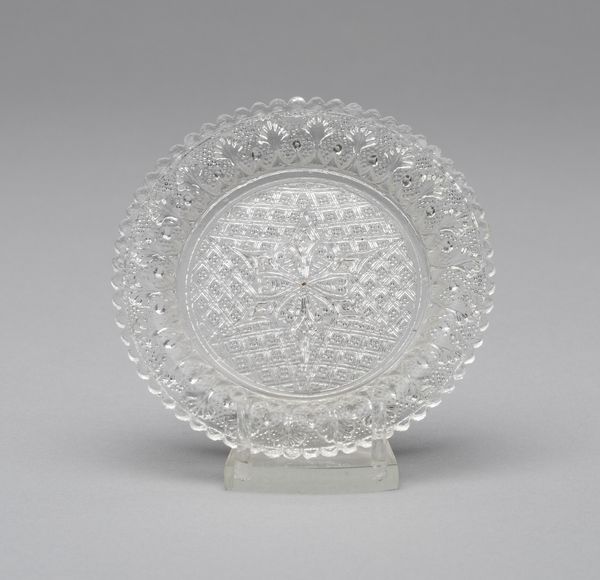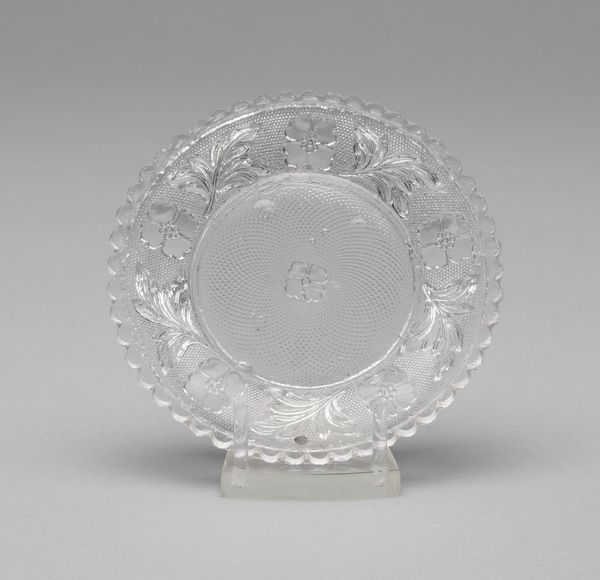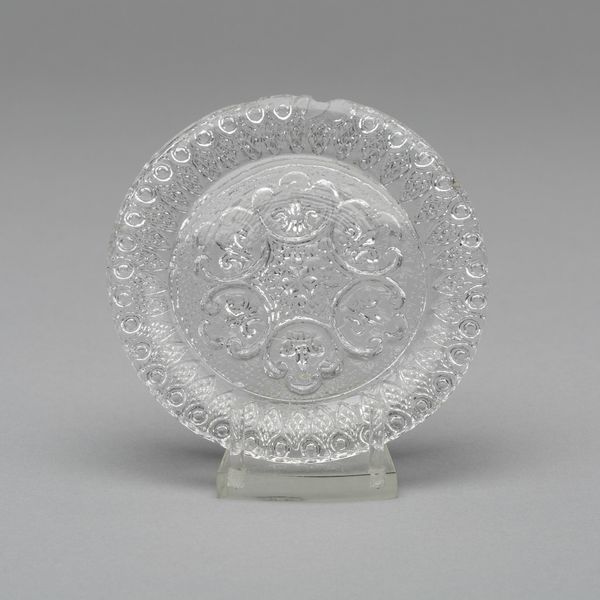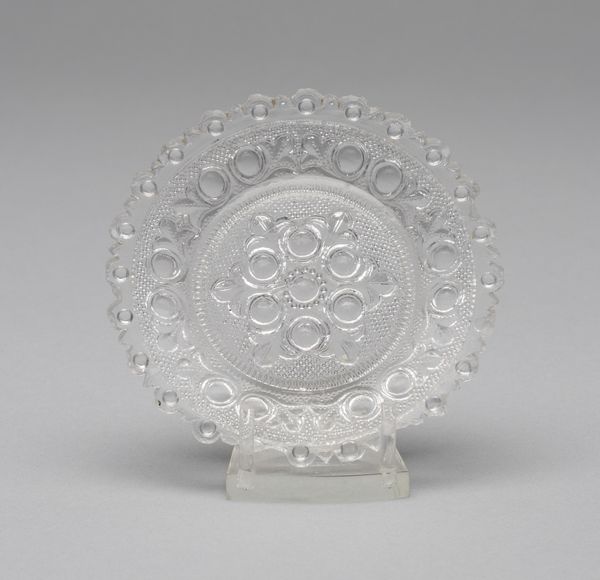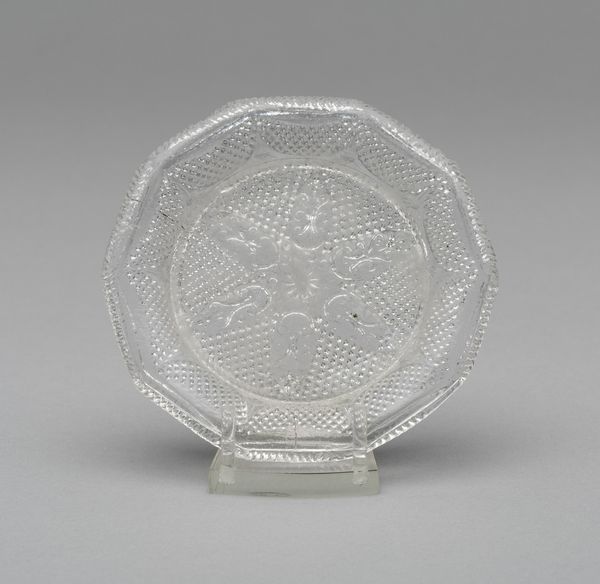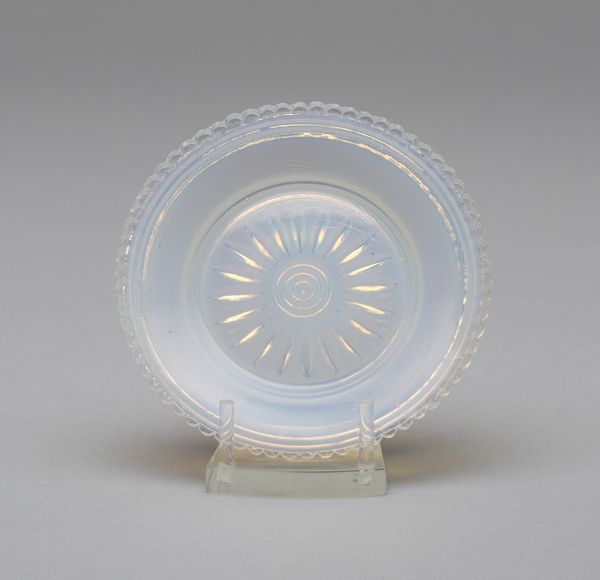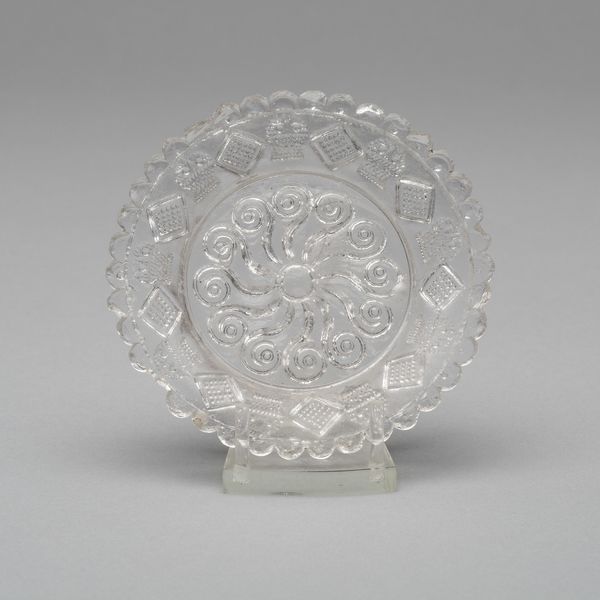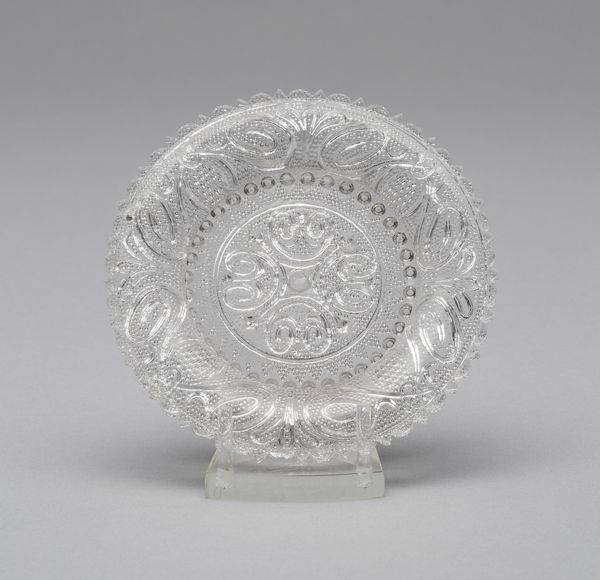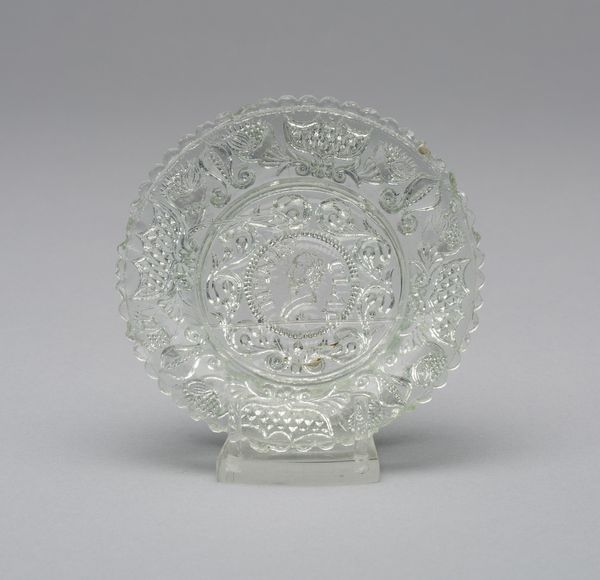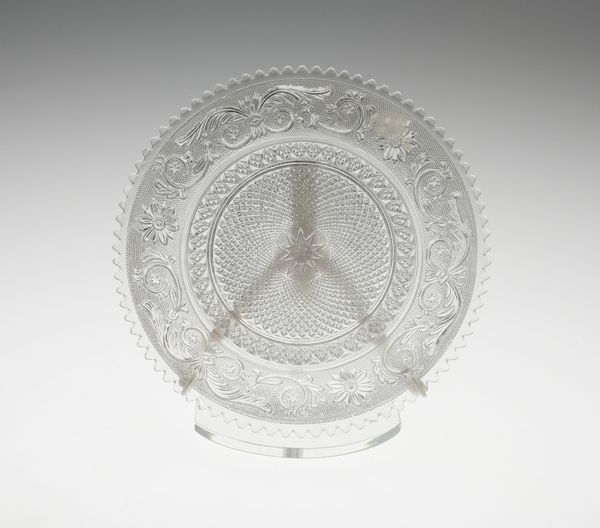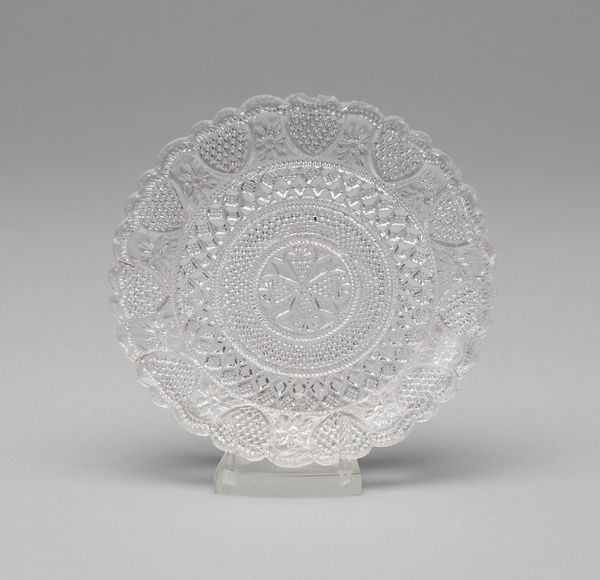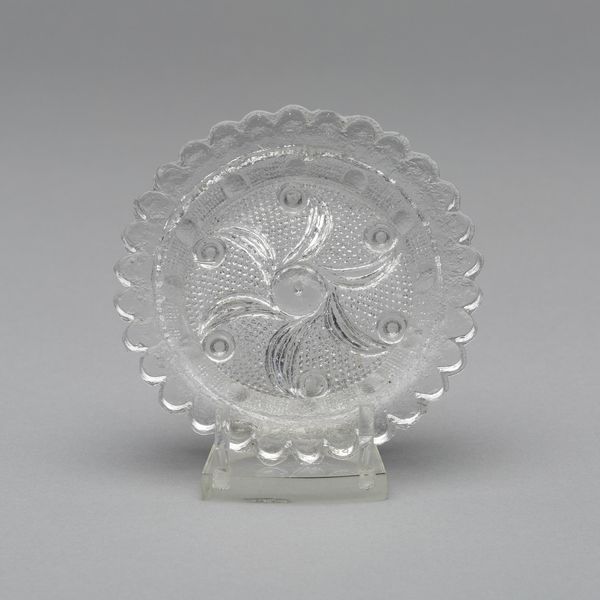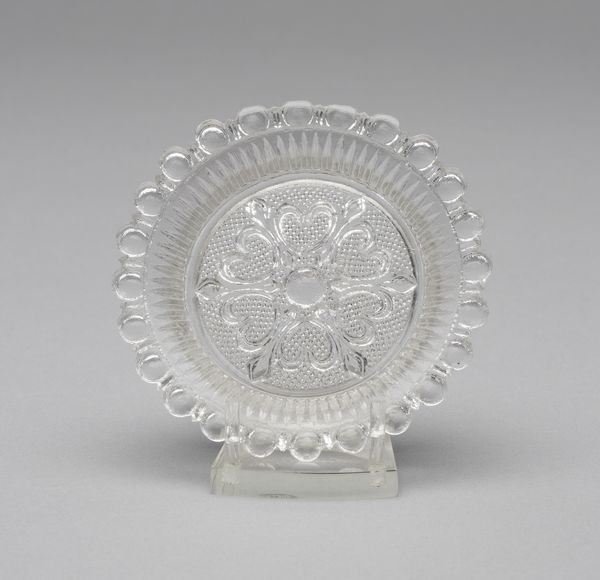
ceramic, glass
#
ceramic
#
glass
#
ceramic
#
decorative-art
Dimensions: Diam. 8.3 cm (3 1/4 in.)
Copyright: Public Domain
Editor: Here we have an opalescent glass cup plate from around 1830 to 1835, location courtesy of The Art Institute of Chicago. It has such a delicate, almost ethereal quality. What’s the story behind everyday objects like these being in a museum? Curator: It’s fascinating, isn't it? Something as humble as a cup plate reveals a great deal about 19th-century American society. These weren’t considered fine art, certainly not worthy of elite gallery spaces. Their value, from a historical perspective, resides in their proliferation, which suggests a rising middle class with access to affordable, decorative goods. It suggests that small luxuries were making their way into middle class domestic environments. Have you considered where these would've been displayed? Editor: Probably a table setting, right? To save surfaces from tea stains and spills? But how did functional objects like these eventually gain museum status? Curator: Precisely, though that positioning itself speaks volumes! As museums evolved, their focus broadened to encompass diverse aspects of material culture, with art beginning to function as anthropological artifacts. There was growing recognition that everyday objects offered invaluable insights into a past way of life and the tastes of the masses, especially during the Victorian era with its emphasis on ornamentation. It reveals a growing awareness of history within American culture. Why do you think they’d want to highlight common objects rather than historical figures? Editor: Maybe to get a better understanding of regular people’s lives rather than focusing on wealthy, powerful leaders? To focus on a sort of equity through museum displays? Curator: Precisely. The rise of social history as a discipline elevated these previously disregarded objects to the realm of academic inquiry. Furthermore, the changing politics of imagery contributed, so they helped build new museum audiences, showing what it really meant to be an American during the time period. Editor: That's so interesting! I’d never thought of museums displaying an artifact that reveals this much! Curator: Yes, thinking about objects within their social context certainly adds layers of meaning. Hopefully we've shed light on cup plates beyond their functionality.
Comments
No comments
Be the first to comment and join the conversation on the ultimate creative platform.

